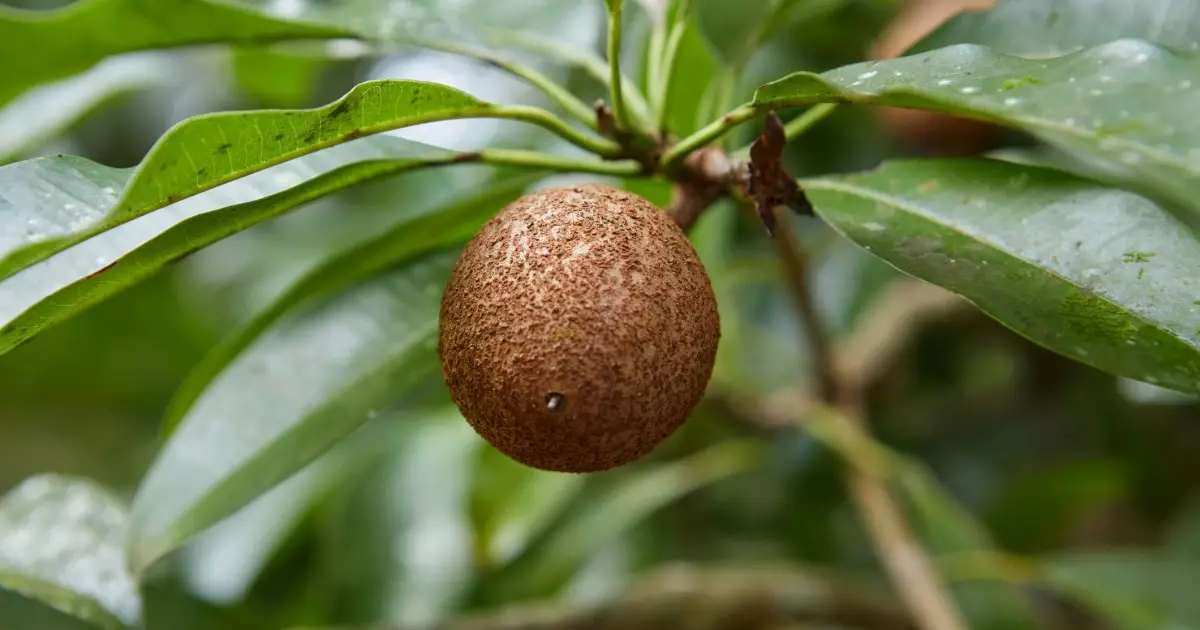Sapodilla, often referred to as chikoo or sapota, is an underappreciated fruit that hails from Central America but remains largely unfamiliar to many in the United States. However, this exotic fruit has much to offer, not just for humans but also for our canine companions. Though sapodilla can be a delicious treat, it is imperative to approach this fruit with caution due to the potential risks associated with improper preparation. In this article, we will explore the benefits of sapodilla for dogs, along with critical preparation tips to ensure safety.
Health Benefits Packed in a Sweet Package
When thinking about canine nutrition, sapodilla might not be the first fruit that springs to mind. However, we should not underestimate its value. The ripe flesh of this fruit contains considerable dietary fiber, as well as essential vitamins A and C. Fiber is particularly significant for dogs, as it supports digestive health and balances their gastrointestinal function. The sweetness and dense texture of sapodilla make it an appealing option that dogs often enjoy, offering a satisfying crunch compared to more succulent fruits like peaches or watermelons.
Moreover, the anti-inflammatory properties of sapodilla are noteworthy. While it might not be a superfood on par with the likes of blueberries or kale, incorporating small amounts of this fruit into dogs’ diets can provide health benefits. By introducing sapodilla in moderation, owners can enhance their dog’s enjoyment of meals and bolster their overall wellness.
Understanding Risks: What Dog Owners Must Know
Despite its benefits, sapodilla is not without risks, particularly due to certain elements that can make the fruit harmful if not prepared correctly. The confusion with mamey, a fruit that is toxic to dogs, adds another layer of complication. Veterinary guidance is essential; consulting a professional can help clarify what is safe and what is not when it comes to introducing exotic fruits into your dog’s diet.
One of the prominent dangers associated with sapodilla is the presence of toxic saponins in its seeds, leaves, and even skin. These compounds can cause gastrointestinal distress and other humane consequences if ingested. To keep your furry friends safe, it is critical to entirely remove the seeds and skin before offering this treat to your dog. Unripe sapodilla fruits are also toxic, making it very important to select only ripe specimens. Look for a fruit that gives slightly when pressed, similar to how you would assess an avocado for ripeness.
Preparing and Serving Sapodilla: A Step-by-Step Guide
Screening the fruit for freshness is the first step towards safe consumption. Once you have a ripe sapodilla, peel away the skin and extract all the seeds. This is non-negotiable; even a small fragment of seed can pose a risk to your pet. Cut the soft, amber-colored flesh into manageable bites, ensuring they are of a size that minimizes choking hazards.
Before giving your dog its first experience with sapodilla, start slow. Offer just a couple of small pieces and monitor for any signs of allergic reactions or gastrointestinal upset. It’s an essential practice to observe how your pup reacts to new foods consistently. Dogs, like humans, may exhibit specific sensitivities, and taking precautions can help avoid any unnecessary emergencies.
Why Sapodilla Can Be a Great Addition to Your Dog’s Diet
Beyond the cautious preparation, there is a unique joy in watching your dog savor a new treat. The experience can be enriching not just for them, but also for you, as you observe their delight in a new flavor and texture. Sapodilla’s distinctively sweet profile can help reinforce positive associations with healthy eating habits.
The key takeaway is that with proper knowledge and preparation, sapodilla can be a delightful and healthy snack for your dog. It’s a fruit that provides opportunities for both nutritional benefits and enjoyable moments together. As raw and natural foods gain popularity in canine diets, exploring options like sapodilla can foster a more diverse and engaging eating experience for your furry friend.

